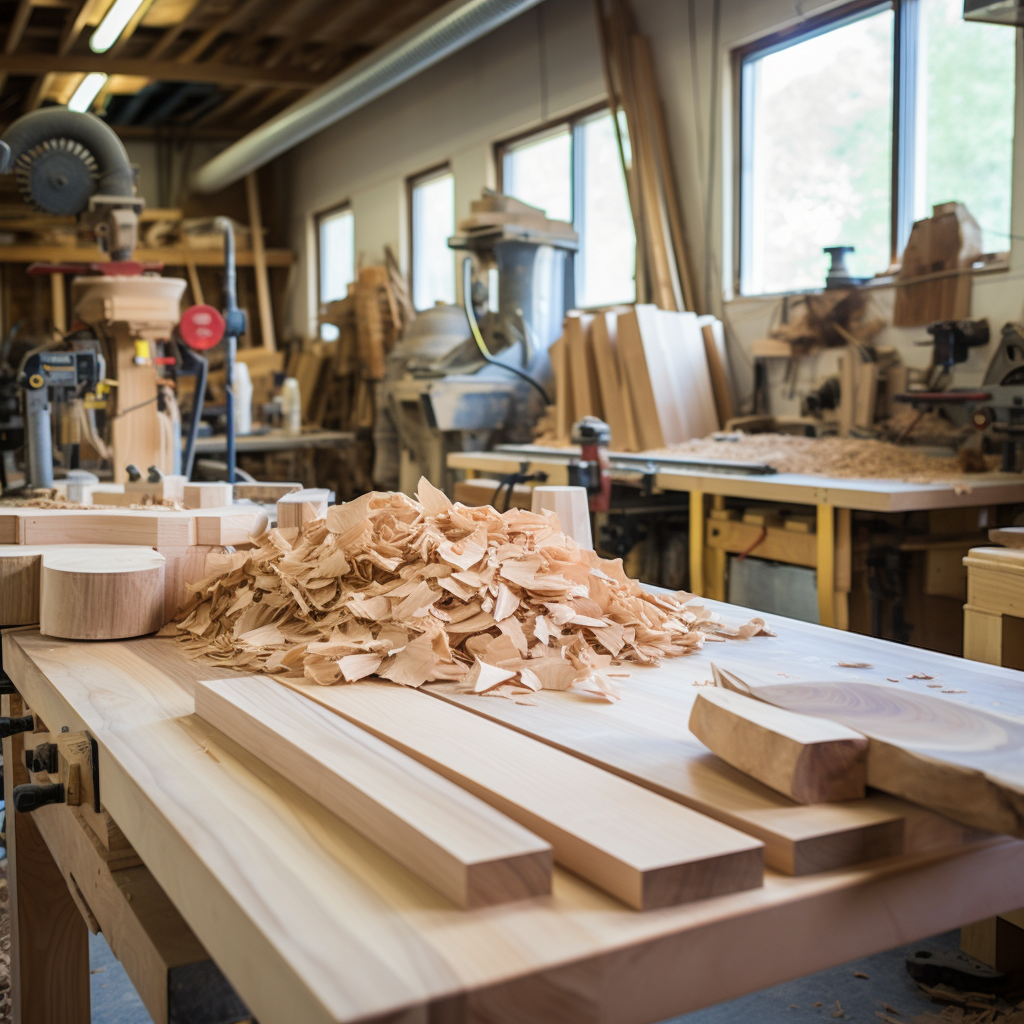You’re probably wondering, ‘how hard is poplar wood?’ As a woodworker, you need to know your materials.
Poplar’s unique characteristics make it versatile but somewhat challenging.
It’s softer than most hardwoods, which affects its durability and how you’ll handle it. But don’t worry, we’ll guide you through understanding poplar wood’s hardness, comparing it to other woods, and giving tips for your projects.
Let’s dive into the world of poplar wood together.
Key Takeaways
- The Janka Hardness Test measures the relative hardness of different wood species, and poplar wood ranks low on the hardness scale.
- Poplar wood’s lower hardness makes it easy to work with, but it may affect the durability of the final product.
- Poplar wood has excellent shock resistance, making it suitable for furniture and construction.
- Despite its lower hardness, poplar wood is still a versatile and eco-friendly choice due to its fast growth rate and adaptability.
Understanding the Hardness Scale for Wood
Understanding this scale is crucial in evaluating a wood’s hardness perception and durability factors.
The scale, known as the Janka Hardness Test, measures the force needed to embed a steel ball halfway into a piece of wood. It’s an essential tool for comparing the relative hardness of different wood species.
Hardness perception, though, isn’t solely about resistance to indentation. Durability factors like density, grain structure, and moisture content play significant roles too. For instance, a dense wood with tightly packed fibers like hickory can withstand more force than a less dense wood like poplar.
Exploring the Characteristics of Poplar Wood
Poplar is a versatile species, offering you an impressive blend of physical properties and aesthetic features.
Here are some key traits of poplar wood:
- Poplar Wood Coloring: Poplar exhibits a wide color spectrum, from creamy white to olive green. It’s highly receptive to stains and dyes, offering diverse finishing options.
- Poplar’s Grain Pattern: It has a generally straight grain, ensuring consistent strength across the board.
- Poplar wood is relatively soft. It ranks low on the hardness scale, making it easy to work with.
- It has excellent shock resistance, making it ideal for furniture and construction.
- Poplar wood is eco-friendly, as poplar trees grow quickly and are widely available.
Poplar Wood Hardness in Comparison to Other Woods
In comparison to other woods, you’ll find that poplar isn’t as hard, but it’s still durable enough for many projects.
Poplar’s softness allows for easy workability, making it ideal for furniture, cabinetry, and even musical instruments. Its medium-density fiber offers an excellent balance of strength and weight, contributing to its widespread use.
However, it’s important to consider Poplar’s Environmental Impact. Its fast growth rate and adaptability translate into a reduced carbon footprint. It absorbs CO2 during its growth and is often plantation grown, minimizing deforestation.
Yet, due to its lower hardness, it can show wear quicker, potentially leading to more frequent replacements. Despite this, poplar’s versatility and eco-friendly attributes make it a valuable wood choice.
The Impact of Poplar Wood’s Hardness on Woodworking Projects
When you’re working on a woodworking project, remember that poplar’s lower hardness can play into the final product’s durability, and it might wear out quicker than hardwoods.
Poplar’s durability could be an issue depending on the use of the finished product. Your ‘Tool Selection’ is vital in working with poplar as it’s softer and less resistant to wear.
- Poplar can be easily cut, shaped, and finished with basic woodworking tools.
- Its softness can result in dents and scratches if not handled with care.
- Poplar is less resistant to environmental factors compared to hardwoods.
- It’s less expensive, making it a good choice for practice or less critical projects.
- Despite its lower durability, poplar takes paint and stains well, providing a pleasing finish.
Tips for Working With Poplar Wood Based on Its Hardness
Don’t let poplar’s softness throw you off; it’s still a versatile wood that can hold up fairly well if you handle it with care. Poplar staining techniques can effectively elevate the wood’s appearance. Use a pre-conditioner to avoid blotchy stains.
Sustainable poplar harvesting is crucial for maintaining wood supplies. Poplar’s rapid growth makes it an eco-friendly choice.
Consider this table illustrating poplar’s features:
| Feature | Advantage |
|---|---|
| Softness | Easy to work with |
| Versatility | Suits various projects |
| Sustainability | Eco-friendly choice |


Leave a Reply